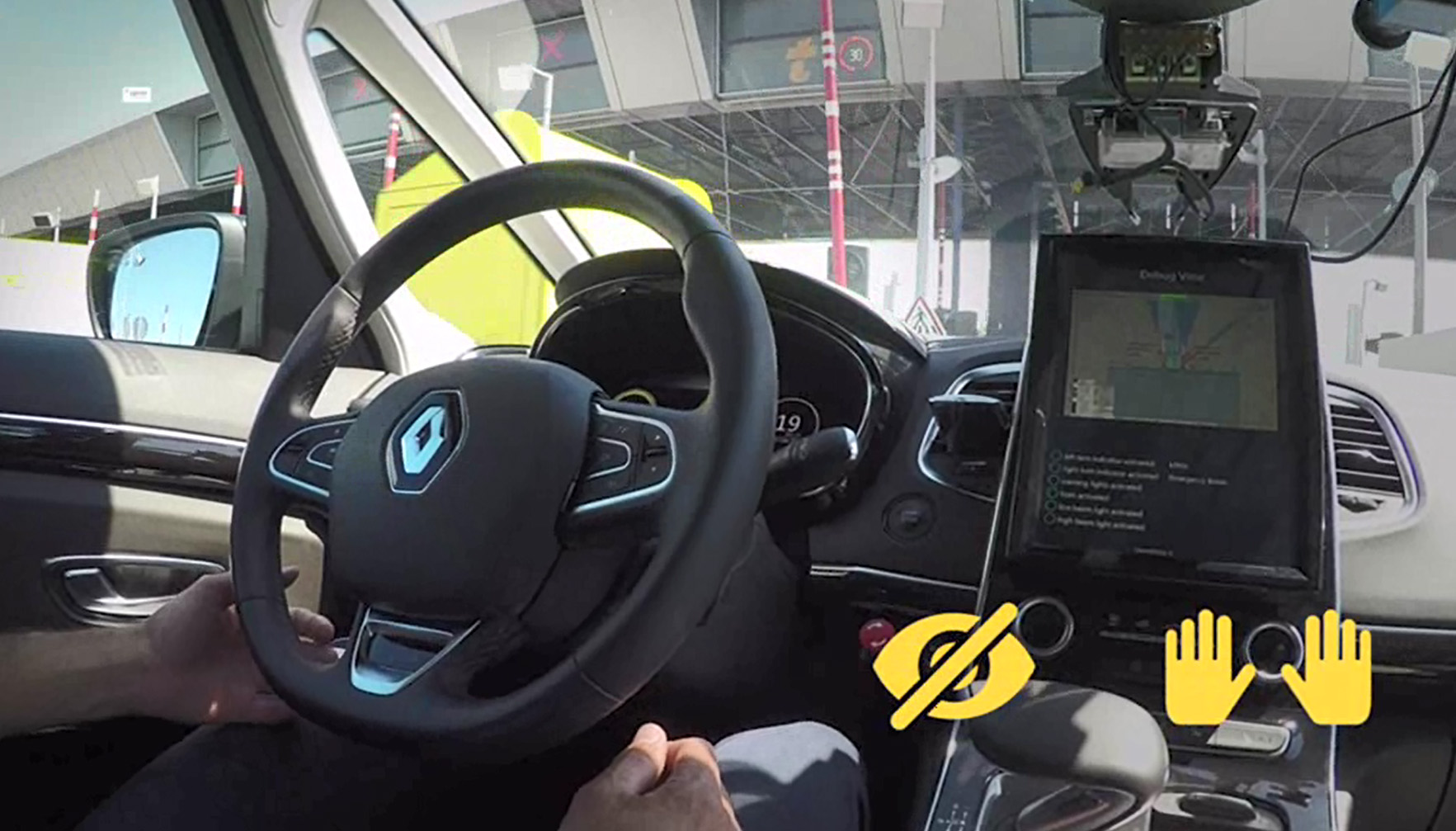Abertis, through Sanef, cooperates with Renault in the developement of communication between toll roads and autonomous vehicles
By connecting an autonomous car to the infrastructure, both companies contribute to a common goal: to maximize road safety and to reduce the number of accidents
Abertis, through its subsidiary in France, Sanef, together with Groupe Renault announced cooperation to further develop communications between autonomous vehicles and road infrastructure, and testing on toll barrier crossing and work zone approach. The partnership contributes to the main objectives for both companies: to maximize road safety and to reach zero fatality.
The companies are working together to shape the car of tomorrow by integrating the infrastructures, using the framework of the European SCOOP@F Project, with the connectivity from car to car and to infrastructure. This experimentation, taking place in France with Renault autonomous prototypes, represents a first step, with the aim to extend cooperation to other countries soon.
“We are convinced that autonomous vehicles need premium infrastructures to be developed. That’s the reason why Groupe Renault and Sanef Group are working together on this worldwide innovation. Our goals in terms of road safety and road tech are converging”, said Édouard Fischer, chief technology officer at Sanef.
An operation as simple as crossing a toll barrier or a road works zone represents a major challenge for autonomous cars to provide continuous travel in eyes-off/hands off mode. A challenge that Groupe Renault and Sanef are well on their way to solve in order to build a comfortable, easy driving experience.
How the pilot project on toll barrier crossing works
Groupe Renault and Sanef launched a specific pilot Project in June, 2016 in Normandy, France along the A13 toll road to study the approach and crossing of toll barriers and work zones by autonomous drive vehicles. The experimentation will continue until mid-2018.
For the toll barrier crossing:
The vehicle receives information about 1 km before the barrier of the toll lanes that are available and compatible with autonomous vehicle driving. Before approaching the zone, the vehicle will anticipate its position in the lane and adapt its speed by gradually slowing down according to the speed sings. Approaching such an area is a critical step in the absence of ground marking. To ensure its guidance, the autonomous Renault vehicles use virtual lines derived from a high definition map of the site. Access to the dedicated lane is performed at a speed of less than 30 km/H, while the sensors maintain the car in the center of the lane. During the acceleration process, the virtual lines system is used. The car is also able to detect the surrounding vehicles and adapt its behavior and its trajectory accordingly. Once the marking on the ground is restored, the autonomous vehicles can continue their route normally.
The SCOOP@F project
As central players in the European SCOOP@F project, Renault and Sanef Group are already collaborating with other industry partners to conduct large-scale tests on equipment that enables road infrastructure to communicate with cars, and vehicles to communicate with one other. These tests are taking place on different sites in France. A hybrid communication system has been developed to connect the autonomous car to the infrastructure, thanks to antennas installed on the toll road towers.
Road Tech in Abertis
The Abertis group works to introduce all the technology innovations on its toll road network to maximize road safety. Abertis hosts a specific programme dedicated to research and innovation, in order to fully understand today’s road tech ecosystem. To do this, the Group cooperates with the world's pioneers in the field of technology applied to roads with a vision for the future of mobility. In this sense, Abertis works to introduce innovations that facilitate the rapid growth of the connected electric vehicles on its toll roads.
Share
Related news
Abertis reinforces its leadership and reaches 100% of the Vallvidrera and Cadí tunnels in Catalonia
11 December 2025
•The Group, who already controlled 50.01% through its subsidiary Autopistas, completes the acquisition of the company that operates those tunnels.
Abertis extends its concession in Rio de Janeiro until 2047
12 November 2025
•The operator wins the tender to continue operating Autopista Fluminense with a new contract that includes an investment plan (aprox. 500 million euros over seven years) to improve mobility and a tariff adjustment as a result of the new investments, along with a 21-year extension.
•José Aljaro, CEO of Abertis, highlighted that “this operation represents a key opportunity for Abertis by extending a strategic asset and strengthening our position as a leader in Brazil, where we manage more than 3,000 kilometers of highways, a significant part of Abertis’ total network of 8,000.”
•Arteris, Abertis’ subsidiary in Brazil, has been the largest investor in the federal highway concession program in the last decade.

